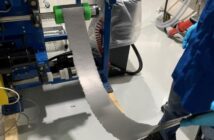Some battery ambiguities pass us by like ships in the night. It is as if they were not there. We understand electrons shuttle in and out between electrodes as batteries charge and recharge. But how come the electrodes do not crack as the electrons arrive and go within their crystal lattices of atoms? If we hammer a chisel into a plank, the wood cracks. Until the other day, no one knew how electrons travel in and out of electrodes without doing something similar.
The Battery Enigma that Set Scientists to Solving It

A team of scientists from MIT, Argonne Laboratory, and Rice and Southern Denmark Universities think they know the answer. They imagined stretching a lithium-ion battery over a fulcrum, and seeing it moving like a seesaw during charging and recharging.
This would be due to electrons arriving and departing. This set them to wondering how electrons travel in and out that way without the electrodes cracking. Especially as expansion rates range from 1%, to 300% in the case of silicon.
Scientists Finally Crack the Code of How Electrons Travel
The researchers from Rice and Southern Denmark Universities, Argonne Laboratory, and MIT used a sodium-ion battery for their research. Although what they discovered might also apply to other battery types, their choice makes sense since sodium-ion batteries are popular for power grid storage.

They observed the electrodes transforming from a solid state to a ‘disordered, glassy condition.’ This was able to flex as it expended and contracted. Now they are wondering whether we should make all future electrodes that way.
This is an exciting development! We are already imagining large sodium-ion batteries charging faster and generating less heat. On the outer fringes of science, the researchers are imagining even more possibilities. They are thinking of using expanding and contracting electrodes as nano-pumps. And all thanks to knowing how electrons travel.
Related
Sodium-Ion versus Lithium-Ion What’s the Score?
Grid Energy Storage: How Will It Work?
Preview Image: Junk at Night




